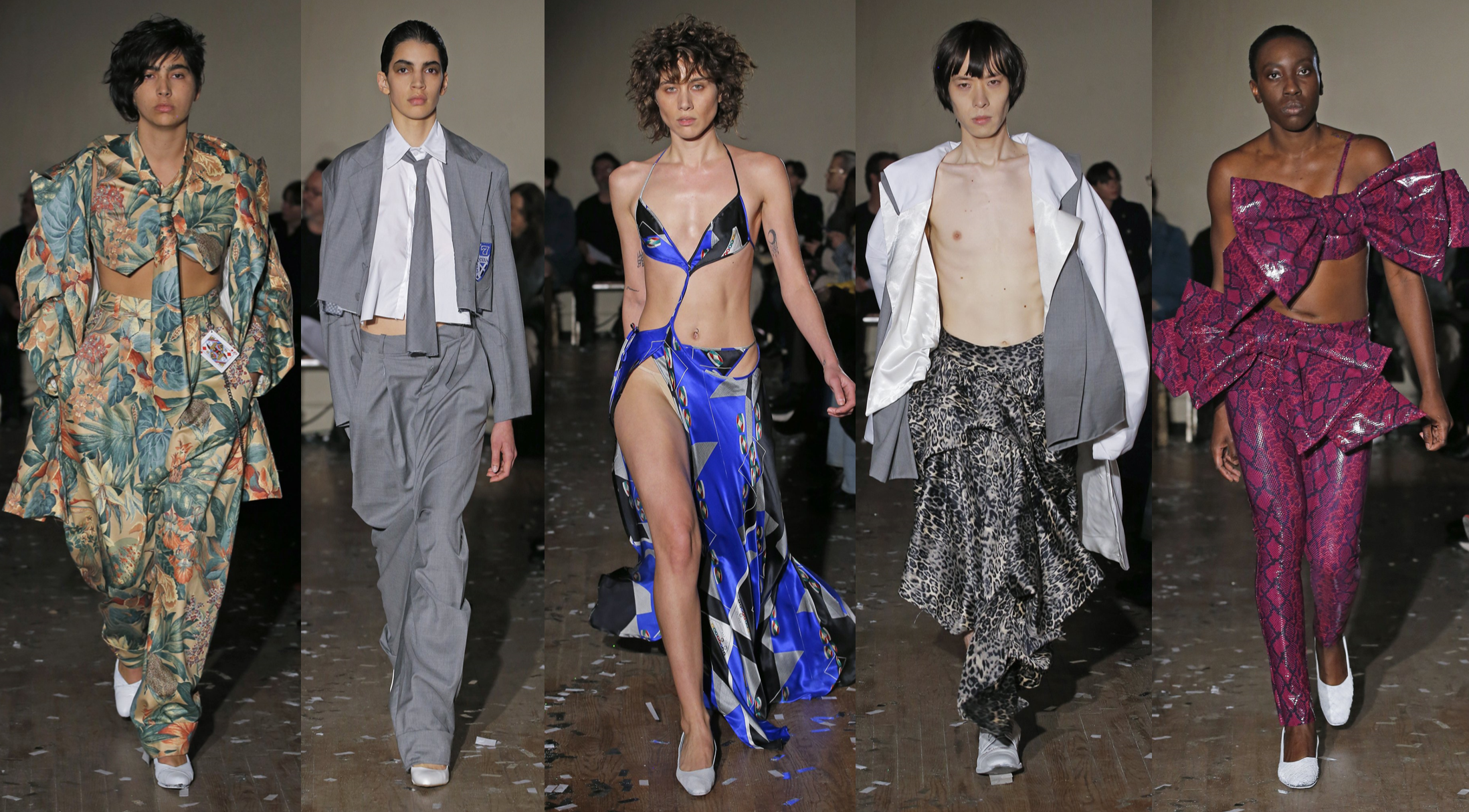
The Curious Case of the Binary Buttons
Written by Astro Pittman, 08/16/2018
Let’s face it: our world is built on a foundation of gender and sexism. Gender inequality, demeaning stereotypes, diminished role expectations, pigeonholes, misogyny, oppression and glass ceilings are all products of a gender-based society. Since the dawn of recorded history, “man” has been finding ways to manipulate what would otherwise be just body parts into yet another way of compartmentalizing, labeling, victimizing, and discriminating against other humans.
Those in power have historically seen gender nonconformists as abominations – a threat to natural order – and for that, many have been persecuted and punished, and many have died.
For those who have defied this social construct, the price has been great indeed. Words and phrases like “sissy”, “man up”, “ladylike”, and “you throw like a girl” have long been tossed around with appalling levels of acceptance. CIS-gendered males and trans women get beaten up and killed for wearing “women’s” clothing as part of their identity-expression, and women who have been raped are told they deserved it for dressing like a slut. Those in power have historically seen gender nonconformists as abominations – a threat to natural order – and for that, many have been persecuted and punished, and many have died.
This mentality is so firmly woven into the fabric of society that many of its toxic symptoms go unnoticed, or at the very least, unchecked. Even something as capricious and arbitrary in its interpretation as art has been overtaken and manipulated by the patriarchy. It is with great sadness that I must begrudgingly include clothing and fashion in this category.
If you’ve read my previous pieces, you know that I have a strong background in the fashion world, and that I love clothing for its ability to facilitate personal expression. If you know me in my personal life, you know that I am a vocal and active advocate for social justice and egalitarianism in all of its forms. It is my firm opinion that many of the constructs, classisms, norms, and politics that currently exist in our society – and have existed for time immemorial – are the barriers that constrict and bind us from reaching our full societal potential. But, I digress slightly. Let me bring it back to fashion, since that is why I am here.
By its very nature clothing is constricting enough, and does not need any help from misogynistic pricks to further drive home or enforce that constriction. And yet, the very direction that the buttons and buttonholes are placed on the plackets of a shirt denotes and reinforces gender inequality and classism in one fell swoop. For those of you who don’t know what I’m talking about, let me fill you in on the history of “the button differential”…
This ridiculous fashion status quo dates all the way back to the Renaissance and Victorian eras, and responsibility for its inception rests firmly in the accepted gender and class roles of that period. It was customary for upper-crust or royal women to tout their status and wealth by donning intricately woven and heavily frilled and adorned finery. The level of foppery of the day was really quite obnoxious. Oh, and buttons were handcrafted, and therefore expensive, as we hadn’t yet moved into the age of industrialization. Women needed assistance to button, fasten, pin, and tuck all of this frivolity into place, and they had servants for just that purpose. Since most servants were right-handed, and it afforded these women another excuse to make a statement of social prowess, the buttons were sewn in on the left for ease of access by their “ladies-in-waiting”. What pomposity! The idea of having a woman serve as a human footstool disgusts me, but that’s how the trophy wives of the day rolled.
And then there are the men of that time to consider. Men hunted and went to war, and they “needed” to show their authority. They also needed to dress themselves in a hurry, often at a moment’s notice. Since most people are right-handed, the buttons on men’s shirts are affixed on the right side as well. They (men) typically wore larger and shinier buttons than women for ease of sight and use in the dark of night, but they still managed to squeeze in a bit of station-flaunting by having the buttons show their family crest or their military status. To this day, military men are required to be polished, pressed, and shined; and to show off their medals. Leave it to a pretentious man to figure out how to simultaneously be practical and posture. Meh. This is why they get a shorter paragraph of explanation than the females.
There’s a bit more to it of course, but at any rate, these became the standards of gender-stereotyping in clothing, and they never left. There’s your free, short-version history lesson for today; you’re welcome, I’ll be here all year.
You might recall names such as Liberace, Bowie, Prince, and Mercury; ring any bells? Those plucky bastards came along and rocked the fashion world with their avantgarde, defiant, system bucking, genderbending, middle-finger-and-eyebrow-raising take on fashion and style. How about the women? Stevie Nicks, Pat Benatar, Madonna, Annie Lennox? They all burned the fashion status quo to the ground.
Now wait a minute, before you go thinking I’m just grumping about fashion’s lack of gender justice and equality. Much progress has been made, and we have the rebels, revolutionaries, and queerdo artists from the 1960’s to the present to thank for that. Turns out those goddamned hippies and their freelove psychedelic bullshit might have actually had a positive effect on the fashion world (I’m just kidding! I’m totally a hippie, I just take showers and don’t wear patchouli. Oh, and the fashion industry still sucks ?). You might recall names such as Liberace, Bowie, Prince, and Mercury; ring any bells? Those plucky bastards came along and rocked the fashion world with their avantgarde, defiant, system bucking, genderbending, middle-finger-and-eyebrow-raising take on fashion and style. How about the women? Stevie Nicks, Pat Benatar, Madonna, Annie Lennox? They all burned the fashion status quo to the ground.
There are plenty of other names to be thrown into that ring, like The Cockettes, who inspired the exhibit “Counter-Couture,” which showed last year at the Museum of Arts and Design in New York. The Cockettes were known for their rejection of mass-marketed and gendered fashion, opting instead to make their own clothing in protest of the fashion industry’s gender norms and its materialistic foundations. All of these people and many, many more paved the way for other free-thinkers to be emboldened to scrap tradition and make up their own rules. Take that, Calvin Klein.
Just look at how far we’ve come. I remember the days when a woman would have been called profane for wearing a pants suit or shaving her head, and a man would have been called a fag (NO!) for wearing pink or a kilt. Much of what was once supremely gendered has now become neutral, and I could not be happier about it.
There are, however, some glaring, smoldering flaws still to be acknowledged and addressed. Fashion is often a mirror of what is going on in society, in conversation, and in politics. Right now, the conversation is very much turning to the issues of gender equality, non-binary identities and orientation, the trans movement (what’s up my people!), and other issues of diversity, equality, and inclusion. Here’s the problem: the fashion industry tends to take counter-and-subculture perspectives and mainstream them, thereby stripping them of their import by way of export. Isn’t that wickedly clever of them?
The mass-marketability of a thing makes that thing insipid, and fashion should never be characterless or colorless. Fashion is meant to be vibrant, subversive, boundaryless, and controversial. Fashion should be the medium for a textile-based celebration of our 1st amendment rights. We should be opening up the gender “conversation” in fashion, instead of taking it away completely; including, rather than omitting.
As a human who enjoys playing around with gender norms in my personal style, I have found the ability to “cross the gender line” both liberating and grounding. I wear “women’s” jeans because they fit me better, I get gel manicures, and I may or may not be the proud owner of a couple of pairs of stiletto boots. It’s refreshing to be able to access that more readily and with ever-growing acceptance, but I fear that fashion’s response to this type of expression (which I’ll get to in a second) will be a shapeless and unbecoming disaster, with no life or identity left in it. That does not sound appealing to me in the least…
Gender has also long been used as a way for the fashion world to capitalize on personal identity, and now they are doing the same with “genderless” clothing. It’s just another trend for commercial fashion to merchandise and cash in on, and it is my firm belief that commerce and art don’t mix. If there is an untapped market out there, you can bet your knickers that the fashion industry will find a way to exploit the hell out of it. If you think these people actually respect and believe in the movement, well, in many cases, you would be wrong. In this business, it is most certainly a profits over people situation. It’s fashion identity theft at its worst.
Big design house ZARA recently did a “unisex” line of clothing, supposedly in support of and solidarity with the non-binary-and-androgynous-identifying; but in their runway show, they didn’t use a single genderfluid, nonconforming, or transgender model. Karl Lagerfeld has done the same thing with the feminist movement, using it as a marketing ploy instead of genuinely affirming the movement. It was actually quite offensive and tacky (I’m not easily offended, and I love tacky). We’ve had enough cultural appropriation for one millennium, I think. Don’t worry, I’ll write about that topic some other time.
But look, up on the runway! It’s a man. No, it’s a woman. Oh, it’s a genderfluid collection show! There are some fresh young faces popping up in the design world, who truly and clearly eschew the traditions of gendered fashion in all of the best ways. Design house Vaquera is one such to drop onto the scene. Their mixture of models is about as diverse and fluid as it gets, and they certainly don’t gender their clothing in any conceivable binary framework; they use the whole rainbow spectrum. Los Angeles designer MarcoMarco recently unveiled his newest collection, exclusively using models who openly identify as transgender. All 34 of them. It was a groundbreaking event in the world of fashion runways, and a breathtaking show to boot (#TransIsBeautiful). Another wonderful example is emerging New Zealand designer Jarrod Reid, who questions and experiments with gender normativism and stereotypes by pushing the gender binary with his design aesthetic. Some prominent design houses have also taken up the flag of gender neutrality, merging their gender collections into one seamless and cohesive gender-transferrable/fluid vision. One such design house is Swedish duo Army Of Me, whose non-binary silhouettes manage to somehow be both darkly brooding and sexy.
Gil Scott-Heron famously wrote: “The revolution will not be televised”. Well, when it comes to the revolution of gender in fashion, he was right, but only because that’s what Instagram accounts are for.
The fashion world is a viciously competitive one; and so when one designer is emboldened to blaze new trails, others are sure to follow. That is exactly what’s happening now, and the media has begun to take note. Gil Scott-Heron famously wrote: “The revolution will not be televised”. Well, when it comes to the revolution of gender in fashion, he was right, but only because that’s what Instagram accounts are for.
So, what does this mean for the gender-future of fashion? Who the hell knows? We will just have to wait and see. I never thought the legalization of same-sex marriage and Donald Trump’s presidential election would happen in the same decade, so I guess anything really IS possible. What I hope, though, is that the future of fashion will look very much like the future of the actual human race: a little bit of everything, and everyone, everywhere. As non-binary and genderfluid diversity becomes more prevalent, recognized, and appreciated, the fashion world will need to step up its game to accommodate us. We non-conformists aren’t going away, so they might as well embrace us, make some shit we can actually wear and look good in, and mean it. About damn time, if you ask me.
Just in case though, I should probably learn how to sew…


